What's New
Displaying results 1901 - 1910 of 4914
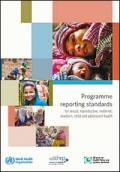
Resource | Guidelines,
Programme reporting standards (PRS) have been developed in the form of a checklist to guide the reporting of sexual, reproductive, maternal, newborn, child and adolescent health (SRMNCAH) programmes. The PRS checklist seeks to fill the gaps mentioned in the Introduction by providing a list of key reporting items related to the development, implementation, and monitoring and evaluation processes of SRMNCAH programmes. By focusing specifically on the systematic reporting of these processes, the PRS highlights lessons learnt in the field and helps to facilitate replication and scale-up.
This document presents version 1.0 of the PRS checklist and also provides an overview of the PRS and instructions on how to use it, including a detailed description of each section and item, and additional resources that can be used to support or complement the reporting process.
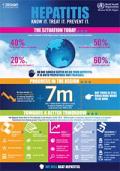
Resource | Infographics,
Infographic on hepatitis produced by WHO Regional Office for the Western Pacific.
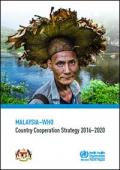
Resource | Publications,
The Malaysia–WHO Country Cooperation Strategy 2016–2020 will guide collaboration on health for the next five years between Malaysia and WHO.
The 2016-2020 strategy builds on previous strategies, with WHO assistance now increasingly focused on more specialized areas. The priorities identified reflect Malaysia's level of development and the significant capacity and resources that Malaysia has devoted to many aspects of health, particularly communicable disease control and maternal and child health. This strategy is the result of discussions between the Ministry of Health and WHO and includes input from other key development partners working in health.
The strategic priorities identified are also in line with two recent global WHO reforms, which are reflected in the cooperation strategy.
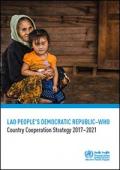
Resource | Publications,
The Ministry of Health of the Lao People’s Democratic Republic and the World Health Organization (WHO) are pleased to present the Lao People's Democratic Republic–WHO Country Cooperation Strategy 2017–2021. The strategy provides a blueprint for collaboration on health for the next five years between the Lao People's Democratic Republic and WHO.
Countries are changing and developing rapidly, as are the needs and expectations of their populations. The Lao health system has shown significant improvements, as evidenced by the achievement of most of the country's Millennium Development Goal targets.
The cooperation strategy was developed by leveraging these developments, in consultation with Government agencies, the United Nations system in the country and other multilateral health and development partners.
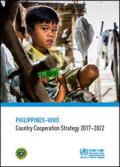
Resource | Publications,
The The Philippines–WHO Country Cooperation Strategy 2017–2022 spells out the country's shared vision for health: All for health towards health for all. This is the vision of the Philippine Health Agenda 2016–2022, with which this strategy is closely aligned.
The Philippines has made significant investments and advances in health in recent years. Rapid economic growth and strong country capacity have contributed to Filipinos living longer and healthier. However, all the benefits of this growth have not reached the most vulnerable groups, and the health system remains fragmented.
In the international arena, the Philippines has been an active Member State of WHO, and is the home of the WHO Regional Office for the Western Pacific. The country has played a critical role in shaping development agendas, including the Sustainable Development Goals (SDGs). In the spirit of the SDGs, this country cooperation strategy focuses on leaving no one behind and enhancing collaboration for health to move the Philippines closer to universal health coverage. The work of WHO and the Department of Health will focus on five strategic priorities: saving lives, promoting well-being, protecting health, optimizing the health architecture and using platforms for health.
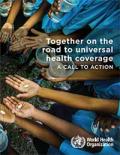
Resource | Publications,
Universal Health Coverage (UHC) is central to achieving better health and well-being for all people at all ages. It delivers disease prevention, health promotion, and treatment for communicable and noncommunicable diseases alike, while ensuring that individuals are not driven into poverty because of high costs.
UHC is not an end in itself: its goal is to improve the chances of every person attaining the highest level of health and well-being and contributing to socioeconomic and sustainable development. Attaining UHC is thus essential to every nation’s economic productivity, health security, social stability – and to every individual’s well-being, security, and productivity.

Resource | Publications,
This report provides a 2016 snapshot of the status of national health information systems (HIS) in the Pacific. The Meeting on Strengthening Health Information Systems in the Pacific organized by the Pacific Health Information Network (PHIN), the Pacific Community (SPC) and the World Health Organization (WHO) was held in Nadi, Fiji, in May 2016. It was a timely meeting as the heads of health had ratified the Healthy Islands Monitoring Framework in April 2016, leaving HIS professionals to work out the mechanisms by which the indicators would be collected and reported. The PHIN meeting provided an opportunity for countries to reflect on some of the challenges and opportunities for strengthening HIS, with the end goal of being able to monitor accurately and report on the health of their nations.
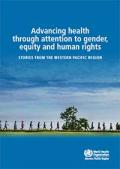
Resource | Publications,
To successfully advance health through attention to gender, equity and human rights, an organization must also transform its culture from within. One critical step towards doing this is to identify strategic entry points, based on lessons learnt from examples of success or promising practices. Accordingly, the Technical Working Group identified as one of its major activities in 2016 the development of a report illustrating such examples, through a reflective and interactive cross-divisional process. WHO staff at the Regional Office and in country offices were engaged in an internal reflection process to identify and develop examples. This report does not provide an exhaustive list of these examples and discussions, but rather represents snapshots across various health topics and programmes and across different functions of WHO in the Western Pacific Region.

Resource | Publications,
Member States achieved significant successes with the MDGs, but the gains did not equitably benefit all groups in society. The gains under the MDGs were realized in a large part due to programmatic approaches focused on specific disease and health issues.
This Regional Action Agenda on Achieving the Sustainable Development Goals in the Western Pacific aims to guide Member States as they embark on SDG implementation. Much progress has already been achieved. Member States can rely on information systems, reporting and coordination arrangements, and policies and programmes that are already in place. Achieving the SDGs also involves significantly new ways of working that go beyond business as usual – and newer roles and capabilities for the health sector in working across government and stakeholders. The action agenda suggests practical actions to achieve the change in mindset that is needed.
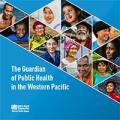
Resource | Publications,
Health outcomes across the Region have improved in recent decades, but serious challenges remain. More than 30,000 people die each day due to preventable chronic diseases. In many countries, childbirth remains a danger to both mother and child, and more than 4 million babies die each year before they reach 1 month. Established and emerging infectious diseases from tuberculosis to Zika virus disease pose real threats.
The Regional Office for the Western Pacific is squarely focused on responding to the specific needs and challenges of countries in the Region. It facilitates the sharing of knowledge among countries and serves as a hub for collaborative work. It helps translate global health initiatives into regional action plans.





